If you’re a pro gardener or a beginner and you’re looking for plants that are easy to care for and will beautify your indoor space – or plants that can survive and thrive under challenging settings – succulents are your best bet. But what are the easiest succulents to grow indoors?
Some of the easiest succulents you can grow indoors include Lithops, Aloe Vera, Burro’s Tail, Echeveria, Panda Plant, Zebra Plant, Pincushion Cactus, etc.
Interestingly, these succulents are great for beginner gardeners because they’re low-maintenance, don’t require much attention, and still look stunning.
They’re also forgiving of mistreatment and overwatering, simple to cultivate from cuttings or division, and they flourish in less-than-ideal conditions.
Later in this article, we will also look at some of the hardest succulents to grow! O yes, we will.
Table of Contents
Are Succulents Beginner Friendly?
Succulents are easy to care for and forgiving of first-time gardeners learning the ropes, thanks to their low-maintenance requirements and propensity to multiply.
Are All Succulents Low Maintenance?
Are you looking for a low-maintenance plant? Consider a succulent. Succulents are plants with squishy stems or leaves. Only a few other plant families have succulent representatives, aside from cacti. Cactus or not, all of these succulents are low-maintenance.
Succulents are drought-tolerant plants with water storage in their leaves, stems, and roots. Succulence, or the storing of water, gives them a meaty appearance. While you can’t entirely ignore them, they require very little attention.
Make an effort upfront to develop a low-maintenance arrangement. Ascertain that the plants have adequate drainage. Cactus soil is available for purchase, or you can mix sand or gravel into regular potting soil. Make sure your container has a drainage hole in the bottom.
Succulents are slow-growing plants, so pack them in the container tightly. Water thoroughly after planting, then let the soil dry between watering. The most common mistake committed by plant owners is overwatering.
Succulent plants dislike sitting in water. In the spring and summer, they require more water, but in the winter, when they are dormant, they need less.
What are the Easiest Succulents to Grow Indoors?
Below are some of the easiest succulents to grow inside your house:
1. Burro’s tail - Sedum morganianum
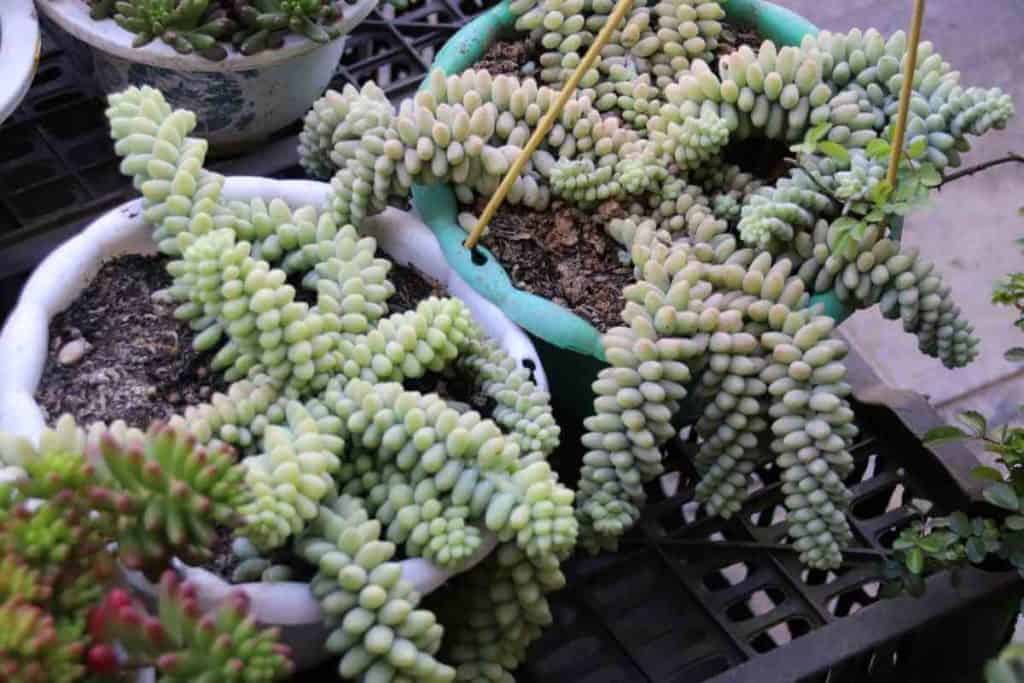
Burro’s tail, sometimes known as donkey’s tail, is a trailing succulent that looks best in a hanging basket or container on a ledge, shelf, or plant stand, where it can drape over.
Each stem can grow to be three feet long, with gray-green leaves the size and shape of a plump grain of rice. The leaves have a light sheen to them that disappears when touched, revealing your fingerprints.
Furthermore, because the leaves are delicate and readily fall off, it’s better to avoid handling this plant as much as possible.
The burro’s tail, which is native to Mexico, performs best in bright light. In the winter, when the soil isn’t growing as quickly, you can let it dry out between watering.
2. Aloe Vera - Aloe barbadensis miller
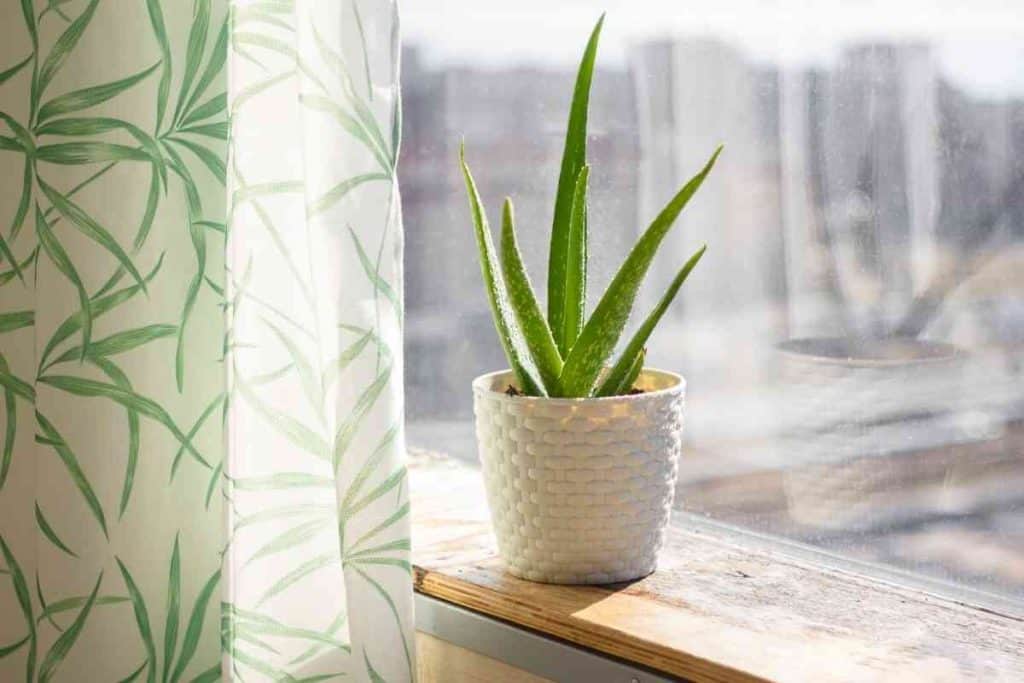
For generations, this prickly plant has been utilized as a medicine. The sap from the inner leaves is used to treat burns and mend wounds.
Aloe Vera should be grown in direct sunshine and irrigated when the leaves get dry or brittle. Keep this therapeutic plant near a light kitchen window to appreciate its beauty on a daily basis.
3. Paddle Plant – Kalanchoe tetraphylla
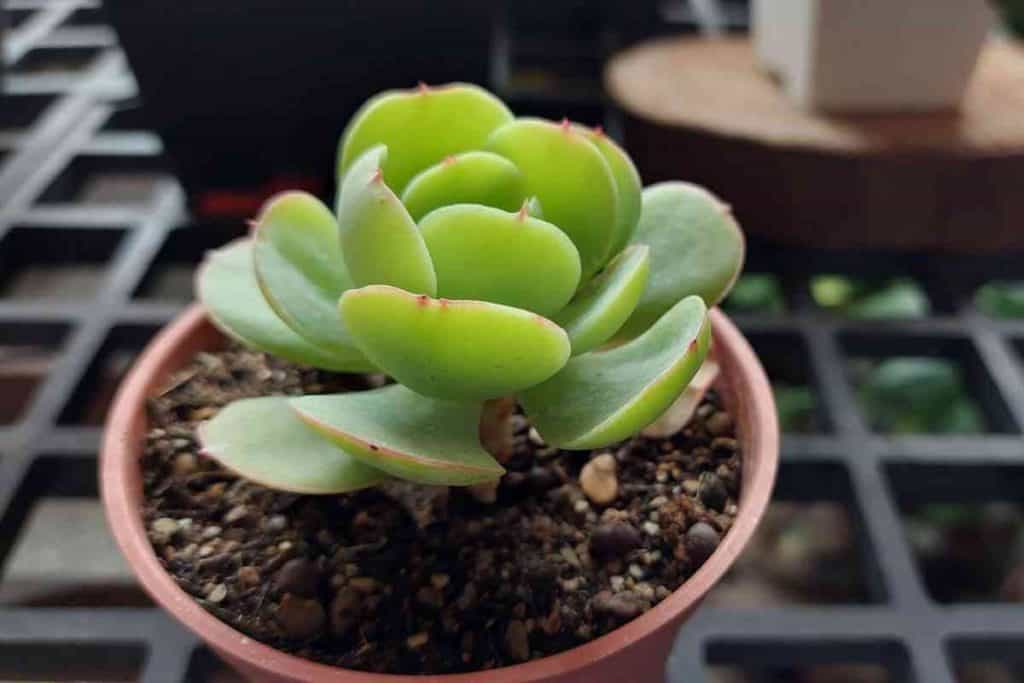
In any modern-style home, this succulent is sure to make a statement! This succulent looks wonderful in a variety of containers because of its red-tinted leaves and geometric design.
Make sure it’s only watered once the top layer of soil has dried out. To keep the edges red, don’t expose it to direct, blazing sunshine; instead, give it plenty of bright, indirect light.
4. Panda Plant – Kalanchoe tomentosa
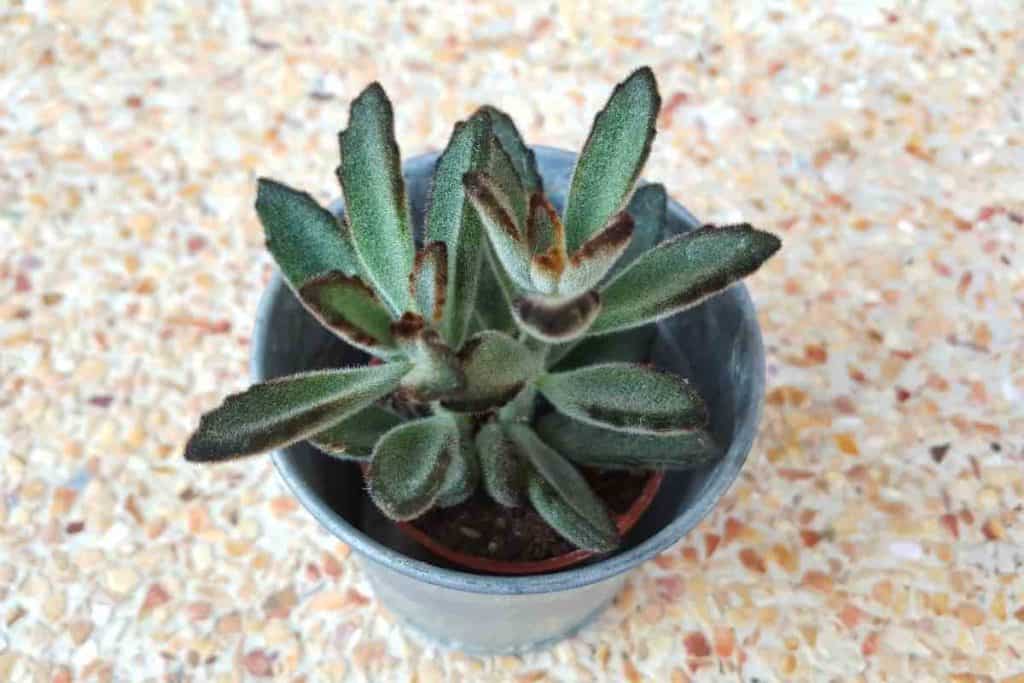
This is yet another adorable succulent! The panda plant is so named because of its fuzzy leaves and flower, but it is extremely rare indoors.
So don’t expect it to bloom; instead, admire the lovely shape and colored margins of this easy-to-grow succulent. Make sure it gets plenty of bright, indirect sunlight and that it dries out between watering.
It can withstand a few hours of direct sunlight in the morning but keep it out of the hot sun in the afternoon. In addition, this plant does not thrive in cold climates.
5. Lithops
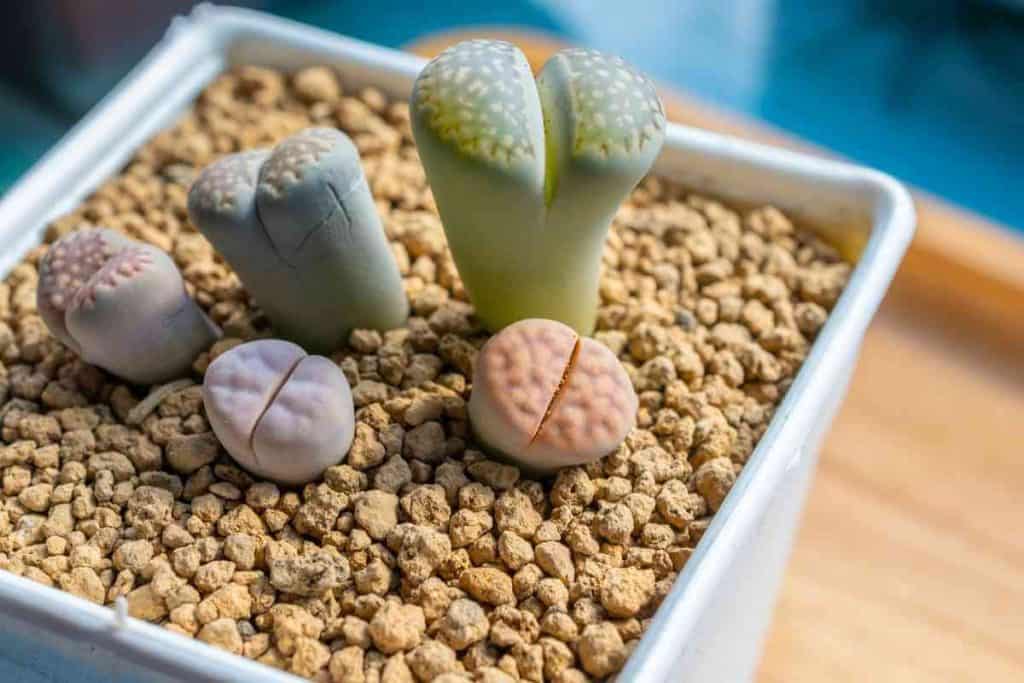
Lithops have resurfaced in popularity, and it’s easy to see why! They’re simple to cultivate inside, have a low growth rate, and come in a variety of colors and patterns.
If given adequate sunlight, they can also flower. These plants thrive in low soils, but they require adequate drainage and are resistant to excessive water.
Lithops also experiences a dormant period in the winter, during which they require very little irrigation (depending on your climate). So, take pleasure in these lovely, one-of-a-kind succulents!
6. Echeveria
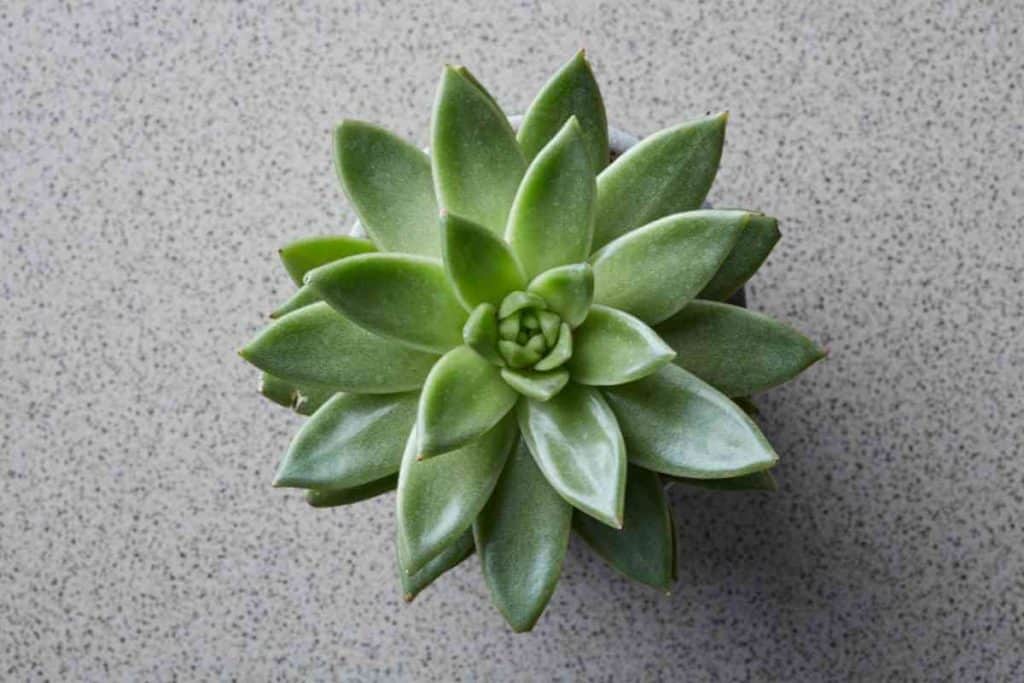
This desert native grows in a variety of colors and prefers dry weather. Echeveria should only be watered when it has completely dried out.
Because the clay allows water to evaporate, unglazed clay pots are great for growing this succulent.
Place echeveria in full light and ensure the soil is well-drained for best results.
7. Zebra Plant
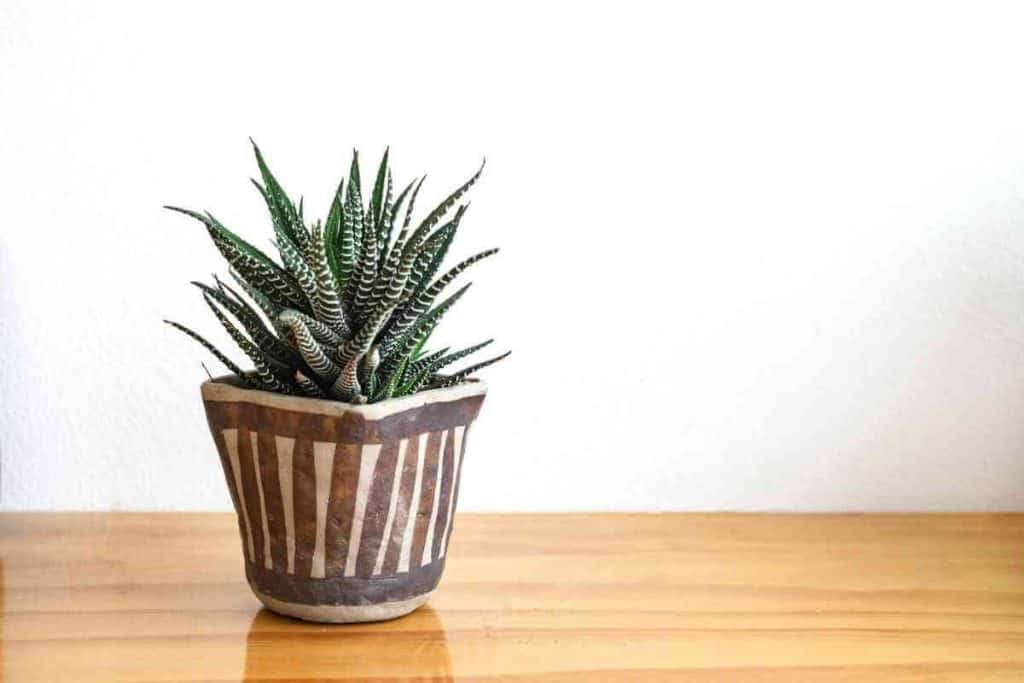
The horizontal stripes that adorn the leaves of this stunning succulent give it its name. The zebra plant, which grows to around 5” tall and 6” broad, is neat, contained, and a great accent to any tiny space.
A reasonable amount of sunlight and water is required by the zebra plant.
8. Crown of Thorns
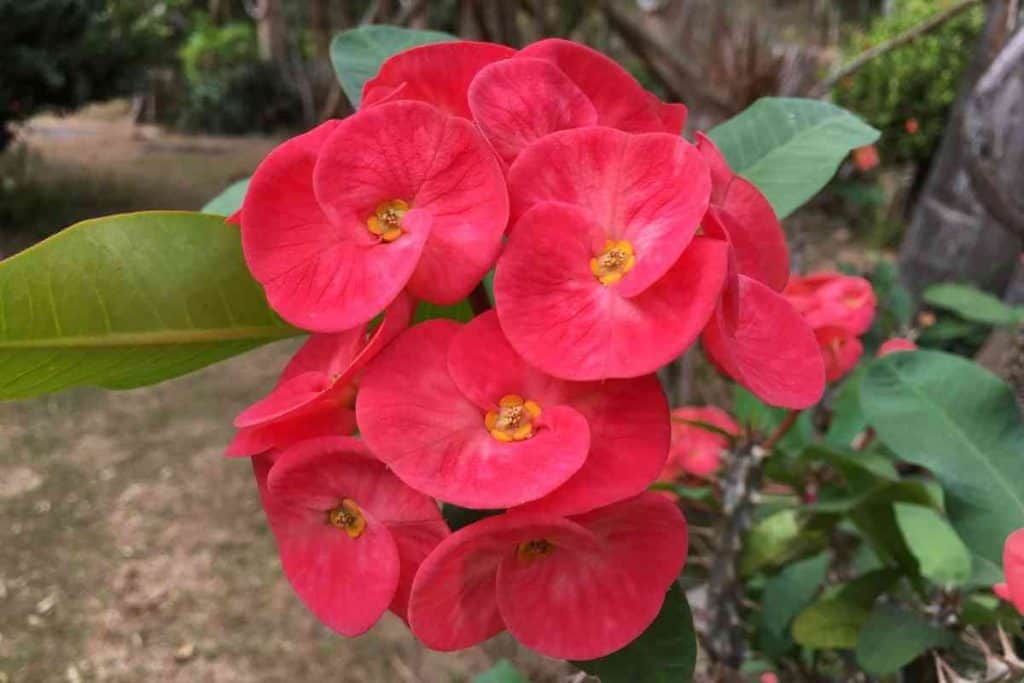
This lovely plant will add a dash of color to your space. It can bloom all year if given enough sunlight, creating red or yellow bracts around its tiny flowers.
Crown of Thorns requires little to no irrigation and should be planted in direct sunlight for the best blooming results.
9. Pincushion Cactus
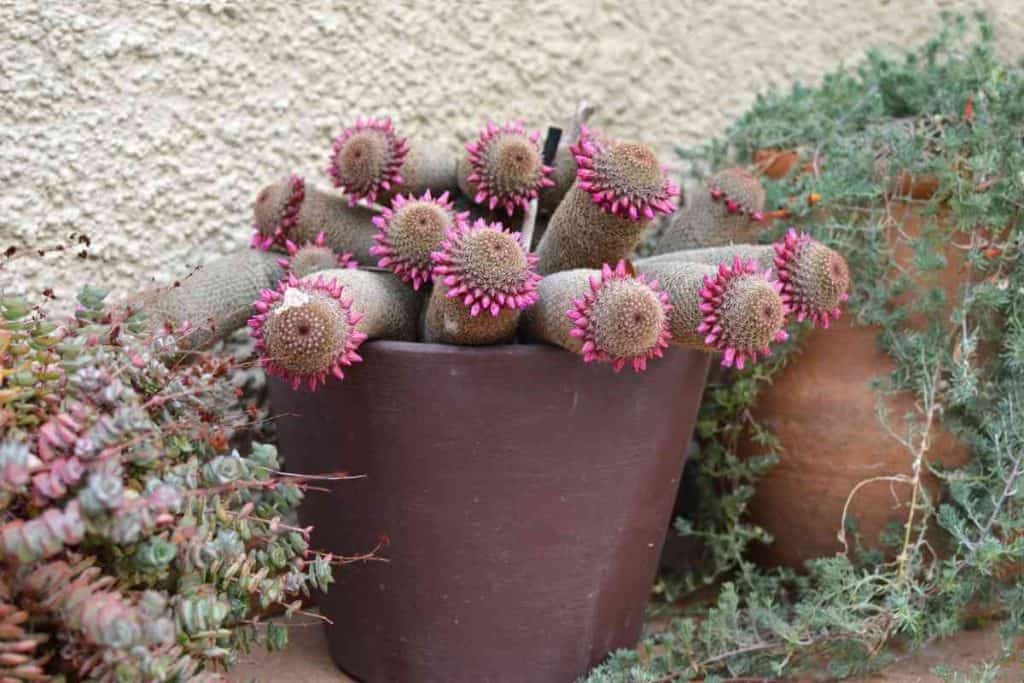
Pincushion Cactus is a lovely cactus with incredibly sharp needles that gave it its name! This guy will require a lot of room because each needle has a hooked end that can be difficult to remove from the skin.
Once again, this plant is not suitable for anyone who has young children at home.
The Pincushion Cactus, on the other hand, is relatively straightforward to care for. All it takes is a lot of sunlight (if you have a bright south-facing window, that would be best). Before the next watering, the earth must also dry out.
The Pincushion Cactus will also require a period of no watering (during the winter) in order to enter dormancy. If you want it to produce those lovely blossoms, you’ll need this!
10. Snake Plant
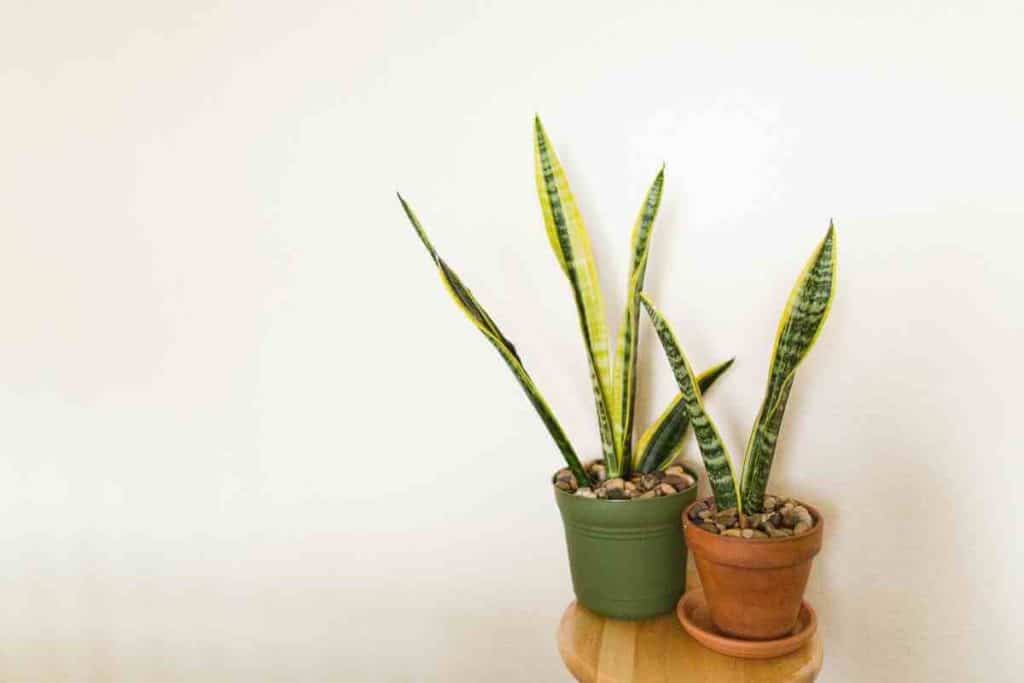
Snake Plant looks excellent in any room because of its brilliant, vertical lines. Allow the soil to dry completely between watering and planting in well-draining soil.
It may begin to decay at the base if left too damp. It is more likely to preserve its vivid markings if exposed to more indirect light. To keep it looking fresh and healthy, prune out any broken leaves, but keep in mind that once the tip is removed, it will no longer grow in height.
11. Air Plants

Air plants have recently increased in popularity due to their ability to grow without soil. They must, however, be watered and given sufficient care, or they will perish.
However, once you’ve mastered a few simple techniques, all of your air plants will flourish! So, first and foremost, make certain that you are properly watering it. This entails spraying it once or twice a week (depending on how much light it receives) and soaking it for several hours once a week.
After that, make sure it’s absolutely dry. As a result, make sure it soaks it all up and then has plenty of time to dry off!
12. Kalanchoe Blossfeldiana
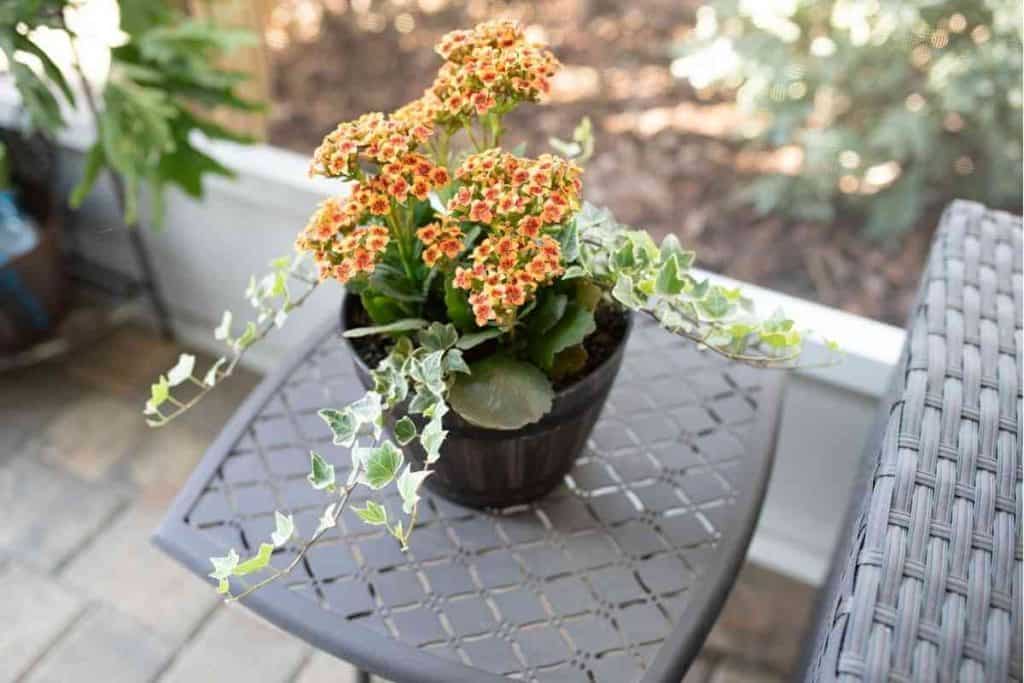
You’ve probably seen this plant before, even if you had no idea what it was. The vividly colored blossoms have earned them the nickname ‘Flaming Katy.’
Over a period of months, they are hybridized to flower in practically every color on the red, pink, and orange scale.
What Are the Hardest Succulents to Grow?
Succulents aren’t all made equal. Some of the plants are not the easygoing, laid-back plants we had hoped for when we bought them.
Some succulents are very certain about what they want and how they’ll deal with it, and they die before you’ve had a chance to understand anything about them.
Let’s get this party started, shall we?
1. Sedum Donkey Tail

Because of ignorance and the fact that they are so delicate, gardeners appear to have a problem with them.
The majority of the misunderstanding originates from the misconception that all Sedum are frost hardy. Only a few Sedum varieties are cold-hardy, and the Donkey’s Tail is not one of them.
In truth, they like the same conditions and care as the String of Pearls: strong indirect light, watering only when the soil is arid, and so on.
They’re also delicate plants. Imagine what an aggressive standing fan can do to these? A gust of wind can knock off a few of their fat leaves… imagine what an aggressive standing fan can do to these?
Because of their chubbiness, they are especially susceptible to overwatering, and their light green foliage does not tolerate direct sunshine.
2. String of Pearls

String of Pearls requires strong indirect light, a thorough soaking of the soil when it is extremely dry, and a warm temperature.
They die out when exposed to direct sunshine, a drop of water when they don’t want it, and temperatures that are too cold or too hot.
3. Hybrid Succulents
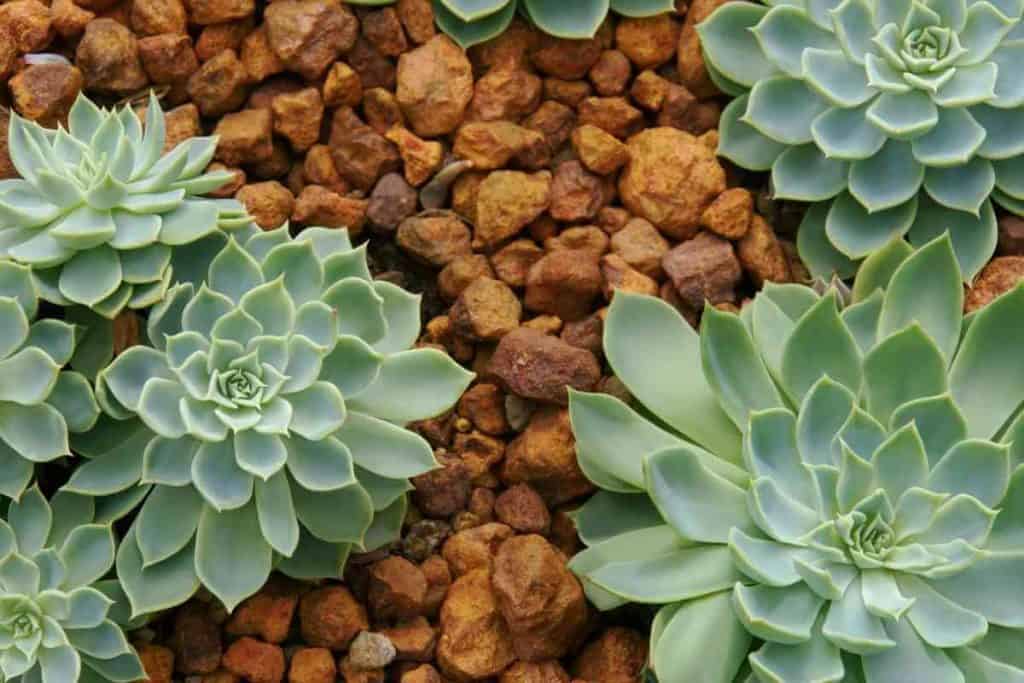
These are some of the most beautiful succulents.
Compton Carousels and Silver Prince are stunning succulents, but they’re also among the hardest to maintain.
Gardeners should be aware that not all hybrid succulents are challenging to maintain. However, some of them are extremely sensitive to light, heat, and water.
We’ve discovered that not all hybrid succulents are low-maintenance, easy-to-care plants due to cross-breeding.
But make sure you understand what you’re getting yourself into before planting these pricey beauties. The Compton Carousel appears to thrive in greenhouses… Do you have a greenhouse on your property?
Too much sun, too little sun, filtered daylight, indirect sunlight, harsh shadow, and the temperature it requires, among other things, are all vital details to know before introducing these into your home.
Can I Keep Succulents In My Room?
Yes, you can place succulents in the room because they grow well in temperatures ranging from 55 to 85 degrees and are very tolerant of low to medium light.
However, in an indoor setting, they do crave the brightest sunlight, especially during the winter, so it is recommended to place them near a south or east-facing window.
They also grow well in areas with no natural light, such as rooms without windows.
Succulents, such as snake plants and aloe vera, are excellent for cleaning the air and removing toxins when kept in the room.
Succulent plants are recommended for improving the beauty of your home, and they are thought to have a positive energy that gives good fortune to the owner.
Can You Keep Succulents In Sand Only?
While succulents can survive on sand, coarse sand is the only type that will work. Fine sand will not grow succulents well, if at all, since it absorbs too much water, making it difficult for the roots to breathe.
Succulents grown on sand will not receive the same amount of nutrients as succulents cultivated in potting soil.
Conclusion
With proper care and maintenance, succulents can transform your home. The good thing is that they can survive without water, unlike other plants. However, this does not mean they are immortal, and they are seriously low-maintenance plants.
To water and keep succulents healthy, give them a good soaking, then let the plant dry out completely before watering it again. They do require more water during the spring when the plant is growing.
These plants should be kept in your bedroom for a boost of fresh air. Growing succulents indoors can be difficult, but with the right tips, you can grow a healthy, beautiful succulent indoors.




